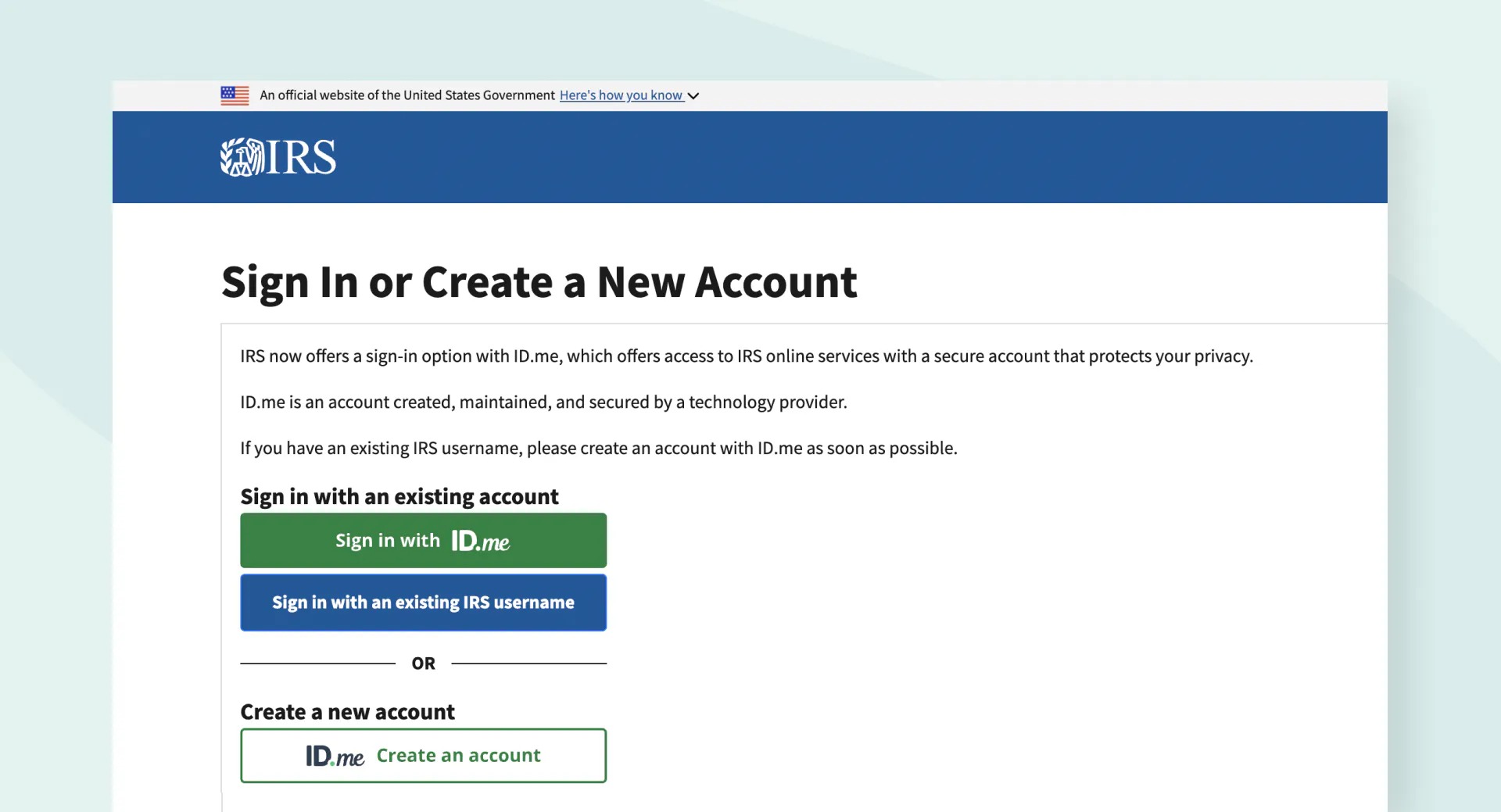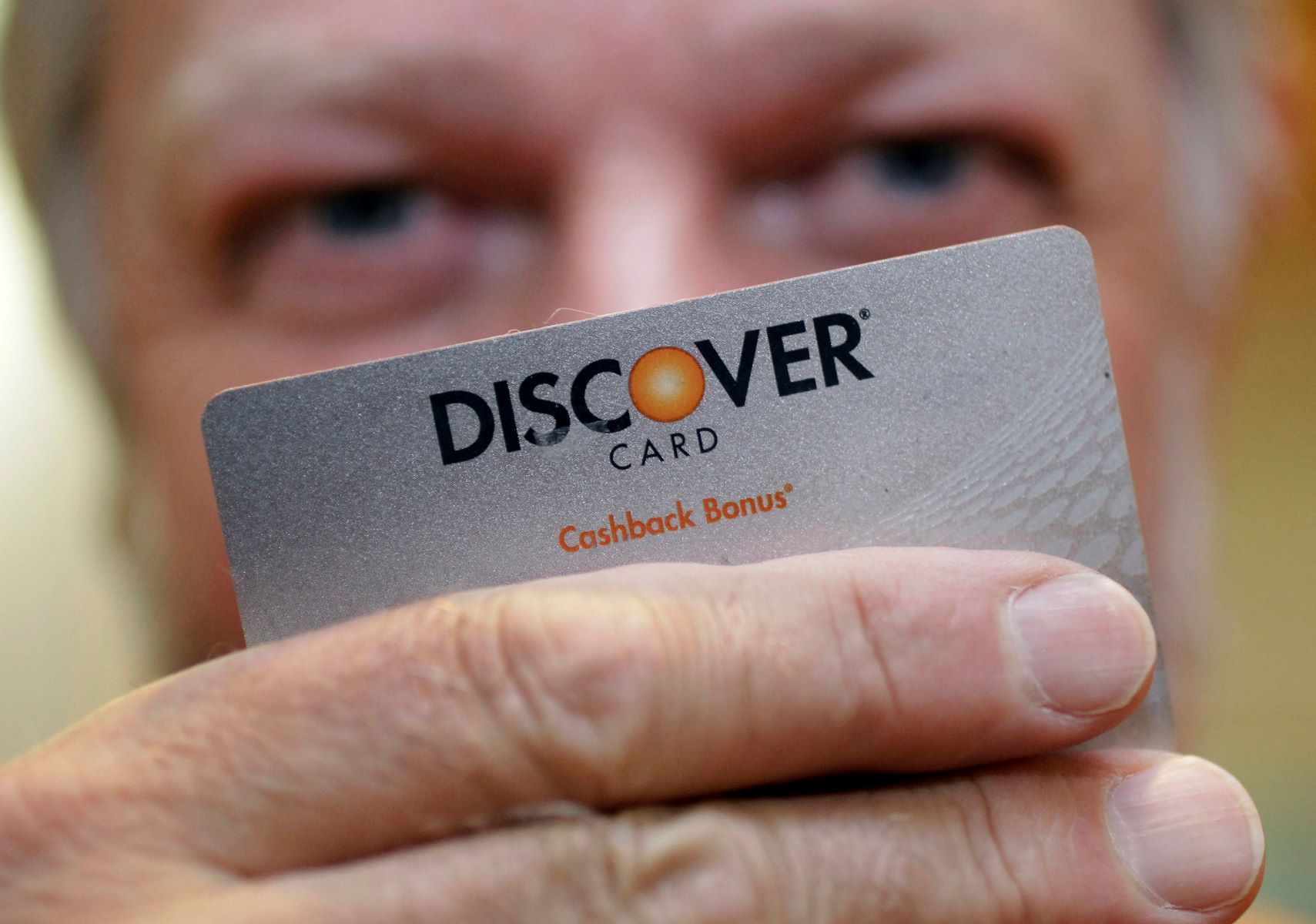

Finance
How To Find Business Loan Leads
Modified: December 30, 2023
Learn how to find potential leads for business loans in the finance industry. Increase your chances of success with these proven strategies.
(Many of the links in this article redirect to a specific reviewed product. Your purchase of these products through affiliate links helps to generate commission for LiveWell, at no extra cost. Learn more)
Table of Contents
Introduction
Securing business loan leads is essential for financial institutions and lenders looking to expand their customer base and increase loan portfolio. Business loan leads refer to potential customers who are actively seeking funding for their businesses. These leads serve as valuable opportunities for lenders to establish new relationships and provide financial solutions tailored to the specific needs of businesses.
However, finding high-quality business loan leads can be a daunting task. With the competitive landscape and evolving market dynamics, it is crucial for lenders to adopt effective lead generation strategies and a comprehensive approach to identify and convert potential customers. In this article, we will explore various methods and techniques to find business loan leads and maximize the chances of successful conversion.
Understanding the nature of business loan leads is the first step towards successful lead generation. Business owners often require funding for various purposes, such as launching a new product, expanding operations, or managing cash flow. They seek financial institutions that can offer competitive interest rates, flexible repayment terms, and the ability to meet their specific business needs.
Once you understand the characteristics and requirements of business loan leads, you can effectively determine the best sources to target and allocate your resources accordingly. In the next section, we will explore the different sources that can provide access to potential business loan leads.
Understanding Business Loan Leads
To effectively find and convert business loan leads, it is crucial to understand their characteristics and preferences. Business loan leads are typically small business owners or entrepreneurs who are actively seeking financing options to support their business goals. They may require capital for various purposes, such as expanding their operations, purchasing new equipment, hiring additional staff, or managing cash flow.
It’s essential to recognize that each business loan lead is unique, with specific requirements and preferences. Some may prioritize lower interest rates, while others may value quick funding and streamlined application processes. It is crucial to be flexible and customized in your approach to meet the diverse needs of potential customers.
When it comes to finding business loan leads, it is essential to target specific industries or niches. Understanding the market trends and the funding needs of different sectors can help you allocate your resources efficiently. For example, if you specialize in lending to startups or technology firms, focusing on industries like IT, e-commerce, or biotech can yield better results.
Additionally, staying updated with market changes and economic trends can provide valuable insights into the funding requirements of businesses. Keeping track of factors like interest rate fluctuations, government initiatives, and industry shifts can help you identify potential leads and tailor your offerings accordingly.
Furthermore, it is essential to consider the financial health and creditworthiness of business loan leads. While some businesses may have a strong credit history and financial stability, others may have experienced challenges or fluctuations. Evaluating the financial risk associated with each lead can help determine the appropriate loan terms and mitigate potential defaults.
Understanding business loan leads also involves recognizing their preferred communication channels. Some leads may prefer traditional methods such as phone calls or in-person meetings, while others may be more inclined towards digital platforms like email, social media, or online loan marketplaces. Adapting your communication strategy to align with the preferences of your potential leads can significantly improve engagement and conversion rates.
In the following sections, we will explore various sources for finding business loan leads, as well as effective lead generation strategies to maximize your success in converting these leads into loyal customers.
Sources for Business Loan Leads
When it comes to finding business loan leads, it is essential to explore a variety of sources to increase your chances of success. Here are some key sources that can provide access to potential business loan leads:
- Referrals: Word-of-mouth recommendations from satisfied customers, business partners, or industry professionals can be a valuable source of business loan leads. Encourage your current clients to refer other businesses in need of financing, and consider establishing referral partnerships with accountants, lawyers, or business consultants who work closely with small business owners.
- Networking Events and Business Conferences: Attending industry-specific events, trade shows, and conferences can help you connect with potential business loan leads directly. These events provide an opportunity to engage with entrepreneurs and gain insights into their funding requirements, giving you a competitive advantage.
- Online Platforms: Utilize online platforms and directories that connect borrowers with lenders. Websites like LendingTree, Fundera, and Funding Circle provide a platform for business owners to submit loan applications, and lenders can access these applications to identify potential leads.
- Small Business Administration (SBA): The Small Business Administration offers various loan programs to support small businesses. By partnering with the SBA and becoming a preferred lender, you can access business loan leads that have been pre-screened and meet certain criteria.
- Online Advertising: Implement targeted online advertising campaigns to reach a broader audience and generate business loan leads. Platforms like Google Ads, Facebook Ads, and LinkedIn Ads allow you to refine your targeting based on factors such as location, industry, and business size.
- Trade Publications and Industry Associations: Industry-specific publications and associations often feature articles, directories, or directories that highlight businesses looking for funding. Advertising or being featured in these publications can help you connect with potential leads who are actively seeking financing options.
- Lead Generation Companies: Consider partnering with lead generation companies that specialize in providing business loan leads. These companies use various tactics such as telemarketing, email marketing, and data analysis to identify and qualify potential leads.
Remember, it is essential to evaluate the quality and relevance of leads from each source. Not all leads may fit your lending criteria or have a genuine need for financing. Developing a robust lead qualification process will help you focus your efforts on leads with higher conversion potential.
In the next section, we will explore effective lead generation strategies specifically designed for business loans, helping you optimize your efforts and increase your chances of converting leads into loyal customers.
Lead Generation Strategies for Business Loans
Generating high-quality business loan leads requires a strategic approach that targets the right audience and effectively communicates the value of your offerings. Here are some effective lead generation strategies to help you find and attract potential business loan leads:
- Content Marketing: Create informative and valuable content that specifically caters to the needs of small business owners. This can include blog articles, eBooks, guides, and videos that provide insights into financing options, tips for business growth, and case studies showcasing successful loan arrangements. Promote this content through your website, social media platforms, and email newsletters to attract potential leads.
- Search Engine Optimization (SEO): Optimize your website and content for relevant keywords and phrases related to business loans. This will help improve your organic search rankings and increase visibility to potential leads who are actively searching for financing solutions.
- Paid Advertising: Utilize pay-per-click (PPC) advertising platforms, such as Google Ads, to target specific keywords and demographics. This will allow you to display ads to potential leads who are actively searching for business loans or related topics. Additionally, consider retargeting ads to engage with leads who have previously shown interest in your services.
- Social Media Marketing: Leverage social media platforms to engage with potential leads and build brand awareness. Create compelling content, such as industry updates, success stories, and loan offers, to attract and captivate your target audience. Engage in conversations, respond to comments and messages, and participate in relevant industry groups to establish yourself as a trusted financial resource.
- Webinars and Workshops: Host informational webinars or workshops specifically tailored to small business owners. This allows you to educate potential leads about financing options, address common concerns, and establish yourself as an expert in the field. Use these sessions as an opportunity to generate leads by collecting contact information and following up with personalized offers.
- Partnerships and Referral Programs: Forge strategic partnerships with industry influencers, business consultants, and professional associations. Create referral programs that incentivize these partners to recommend your services to their clients or members. This can significantly amplify your reach and attract qualified leads who trust the recommendations from their trusted sources.
- Lead Magnets: Offer valuable resources or tools, such as financial calculators, business plan templates, or loan eligibility checklists, in exchange for contact information. These lead magnets provide an opportunity to capture potential leads’ details and nurture them further through targeted email campaigns.
Remember, consistency and persistence are key to successful lead generation. Implementing a combination of these strategies and continuously optimizing your approach based on performance metrics will help you attract a steady stream of business loan leads.
In the next sections, we will discuss how to qualify, approach, and convert business loan leads into paying customers, as well as strategies for tracking and managing these leads effectively.
Qualifying Business Loan Leads
Qualifying business loan leads is an essential step in the lead generation process. It involves assessing the suitability and potential of leads to ensure your resources are focused on those with the highest chances of converting into customers. Here are some key factors to consider when qualifying business loan leads:
- Loan Requirements: Evaluate whether the lead’s financing needs align with your lending criteria. Consider factors such as loan amount, repayment terms, industry focus, and creditworthiness. It’s crucial to ensure that your offerings can meet the specific needs of the lead.
- Business Stability: Determine the stability and longevity of the lead’s business. Look for indicators such as the number of years in operation, revenue growth, and profitability. A stable and established business is more likely to be a reliable customer.
- Financial Capacity: Assess the lead’s financial capacity to repay the loan. Evaluate their financial statements, credit history, and cash flow to gauge their ability to meet repayment obligations. This will help mitigate the risk of default and ensure a healthy lending relationship.
- Collateral and Guarantees: Consider whether the lead has sufficient collateral or personal guarantees to secure the loan. This provides additional assurance and reduces the lender’s risk in the event of non-payment.
- Fit with Target Market: Evaluate how well the lead’s business fits within your target market. Consider factors such as industry specialization, geographic location, and customer demographics. A strong alignment between your lending expertise and the lead’s business can significantly increase the chances of a successful loan arrangement.
- Engagement and Communication: Assess the level of engagement and communication from the lead. Are they responsive to your inquiries? Do they actively ask questions and seek guidance? This indicates their level of seriousness and commitment to the loan process.
It’s important to develop a qualifying framework or checklist to ensure consistency in assessing business loan leads. This framework can include specific criteria and weightage to objectively evaluate each lead and prioritize your resources accordingly.
Streamlining the lead qualification process can save time and resources by focusing on leads with higher conversion potential. However, keep in mind that flexibility is also important. Some leads may not meet all the criteria upfront but may still have strong potential. In such cases, consider conducting further discussions and assessments to determine if they are a good fit for your lending institution.
In the next section, we will explore the best practices for approaching and converting qualified business loan leads into satisfied and loyal customers.
Approaching and Converting Business Loan Leads
Approaching and converting qualified business loan leads requires a strategic and personalized approach to build trust and win their business. Here are some best practices to consider when engaging with potential leads:
- Personalize Your Approach: Take the time to understand the unique needs and challenges of each lead. Tailor your communication and offerings to address their specific requirements. This personalized approach demonstrates your commitment to their success and increases the chances of conversion.
- Provide Clear and Transparent Information: Clearly communicate the terms, interest rates, fees, and repayment options upfront. Be transparent about any requirements or conditions. This builds trust and helps the lead make an informed decision.
- Showcase Your Expertise: Highlight your experience and expertise in providing business loans. Share success stories and case studies of businesses that have benefited from your funding solutions. This establishes credibility and reinforces your ability to support their financial goals.
- Offer Competitive Rates and Terms: Evaluate the market and ensure your rates and loan terms are competitive. Conduct regular market research to stay updated with industry trends and adjust your offerings accordingly. This helps position your institution as a preferred choice among competitors.
- Provide Excellent Customer Service: Ensure that your customer service team is knowledgeable, responsive, and empathetic. Promptly address any queries or concerns potential leads may have. Delivering exceptional customer service throughout the loan process builds trust and loyalty.
- Create a Smooth Application Process: Streamline your loan application process to make it efficient and user-friendly. Minimize paperwork, digitize the process as much as possible, and provide clear instructions for applicants. A smooth and convenient application process enhances the overall experience and increases the likelihood of conversion.
- Nurture Leads with Targeted Communication: Implement a lead nurturing strategy that includes regular communication and relevant content to keep your institution top of mind. Use email marketing, personalized offers, and educational resources to engage and educate leads throughout their decision-making process.
- Build Relationships with Referral Sources: Maintain strong relationships with referrals sources, such as accountants, lawyers, and business consultants. Keep them informed about new loan products or offers and provide them with resources to refer potential leads. Regularly express your gratitude and reciprocate referrals when possible.
Remember, the key to successfully converting business loan leads is to build trust, provide valuable solutions, and deliver exceptional customer service. By demonstrating your commitment and expertise, you can increase the likelihood of converting leads into loyal and long-term customers.
In the next section, we will discuss effective strategies for tracking and managing business loan leads, ensuring efficient lead management and maximizing conversion rates.
Tracking and Managing Business Loan Leads
Tracking and managing business loan leads is crucial to ensure effective lead management and maximize conversion rates. Here are some strategies to help you effectively track and manage your business loan leads:
- Use a Customer Relationship Management (CRM) System: Implement a CRM system to track and organize lead information. This allows you to record interactions, track progress, set reminders, and segment leads based on various criteria. A CRM system helps streamline the lead management process and ensures a centralized view of all lead activities.
- Implement Lead Scoring: Assign a score or rank to each lead based on their attributes and engagement level. This helps prioritize leads and focus efforts on those with higher conversion potential. Factors to consider for lead scoring can include the lead’s financial capacity, responsiveness, and alignment with your target market.
- Automate Lead Nurturing: Utilize automation tools and workflows to deliver targeted and timely communication to leads. This can include personalized email workflows, triggered responses based on specific actions taken by the lead, or automated follow-ups based on predetermined timelines. Automation ensures consistent communication and reduces manual effort.
- Track Key Metrics: Monitor and analyze key metrics to measure the effectiveness of your lead generation and conversion efforts. This can include metrics such as conversion rates, lead acquisition cost, lead-to-opportunity ratio, and time-to-conversion. Regularly review and analyze these metrics to identify areas for improvement and optimization.
- Collaborate with Sales and Marketing Teams: Foster strong collaboration between your sales and marketing teams. Align goals, share insights, and exchange feedback to ensure a coordinated approach to lead management. Encourage open communication and regular meetings to ensure everyone is on the same page and working towards the common objective of converting leads.
- Continuously Refine and Optimize: Regularly review and assess your lead management process. Identify bottlenecks, gaps, or opportunities for improvement. Adjust your strategies, messaging, or targeting as needed to optimize the conversion rates and improve overall lead management efficiency.
- Provide Ongoing Training and Support: Equip your sales and marketing teams with the necessary training and resources to effectively track and manage leads. Provide regular updates on industry trends, competitive insights, and changing customer needs. Continuously improve the skill sets of your team members to enhance their ability to engage and convert leads.
By implementing these strategies, you can effectively track and manage your business loan leads, ensuring that no promising leads slip through the cracks. A well-organized and proactive lead management process increases your chances of converting leads into satisfied customers.
In the closing thoughts section, we will recap the key points discussed and provide some final insights on the importance of effective lead generation and management in the business loan industry.
Closing Thoughts
Effective lead generation and management are crucial for financial institutions and lenders in the competitive business loan industry. By understanding business loan leads, identifying the right sources, and implementing targeted lead generation strategies, you can attract potential customers who are actively seeking financing solutions.
Qualifying business loan leads ensures that your time and resources are allocated to leads with the highest conversion potential. By evaluating loan requirements, business stability, financial capacity, and fit with your target market, you can focus on leads that are more likely to become loyal customers.
Approaching and converting business loan leads requires a personalized and strategic approach. By showcasing your expertise, providing transparent information, and offering competitive rates and terms, you can build trust and win the business of qualified leads. Excellent customer service and efficient application processes also play a crucial role in converting leads into loyal customers.
Tracking and managing business loan leads with the help of a CRM system, lead scoring, and automation tools allows you to streamline your lead management process, nurture leads effectively, and maximize conversion rates. Collaboration between sales and marketing teams, continuous refinement of strategies, and ongoing training are also key to successful lead management.
In the competitive landscape of business lending, effective lead generation and management provide a significant advantage. By investing time, resources, and creativity into these areas, you can establish strong relationships with business loan leads, convert them into satisfied customers, and ultimately grow your loan portfolio and business.
Remember, the process of finding, approaching, and converting business loan leads is an ongoing effort. Continuously evaluate and refine your strategies, adapt to evolving market dynamics, and stay responsive to the needs of your leads. With a comprehensive approach to lead generation and management, you can achieve long-term success in the business loan industry.














